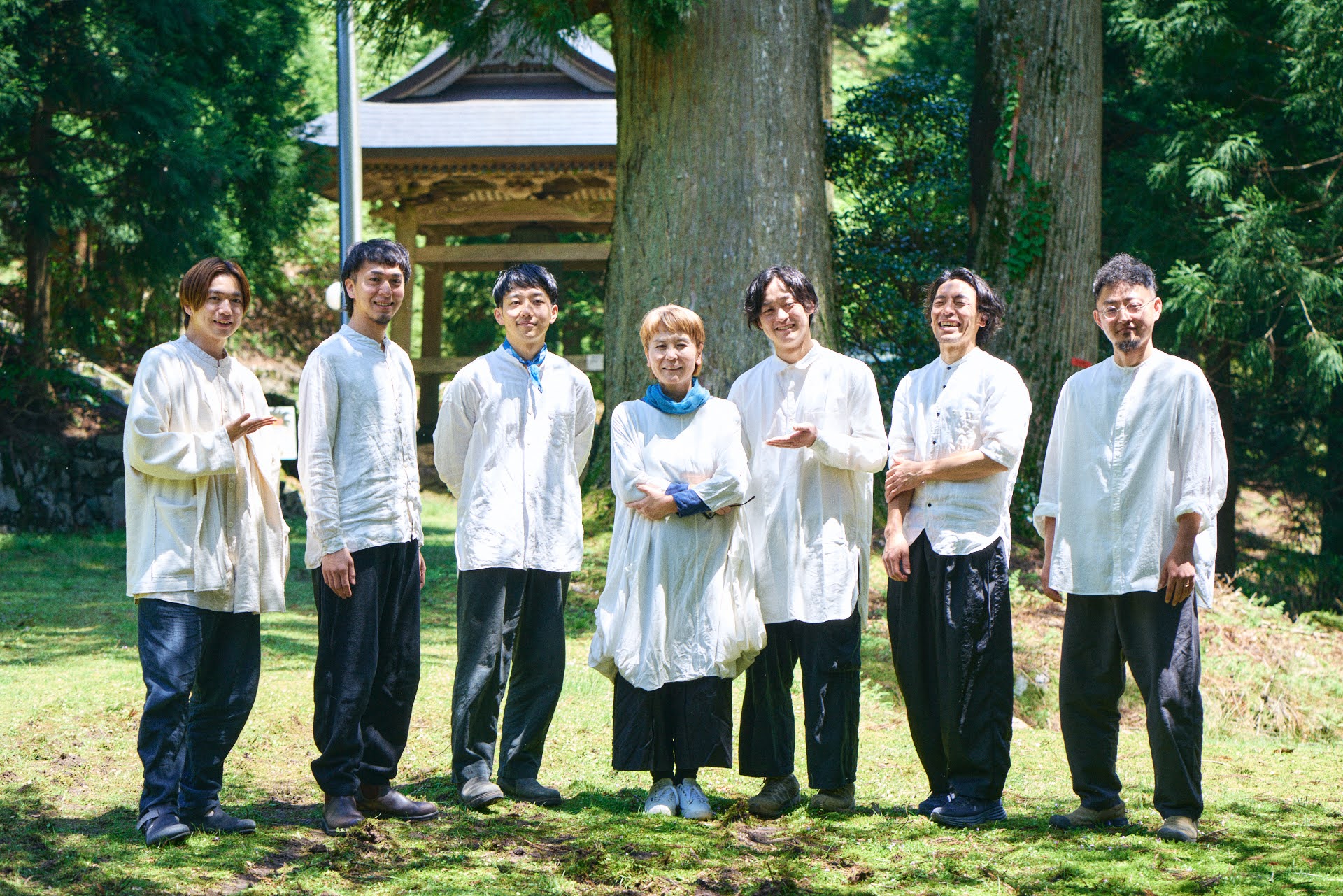There is talk of a very rare tea tree called “F4” in Kameyama City of Mie Prefecture.
The tea tree was discovered growing quietly in a forest by chance by Kyoko Yoneda. Yoneda, who runs a gallery for clothing, food and daily goods in Sekijuku, has been protecting and tending to these trees ever since.
The F4 tea trees grow under the protection of the forest trees. When we visited in May, the forest was surrounded by fresh tea leaves swaying gently in the wind.
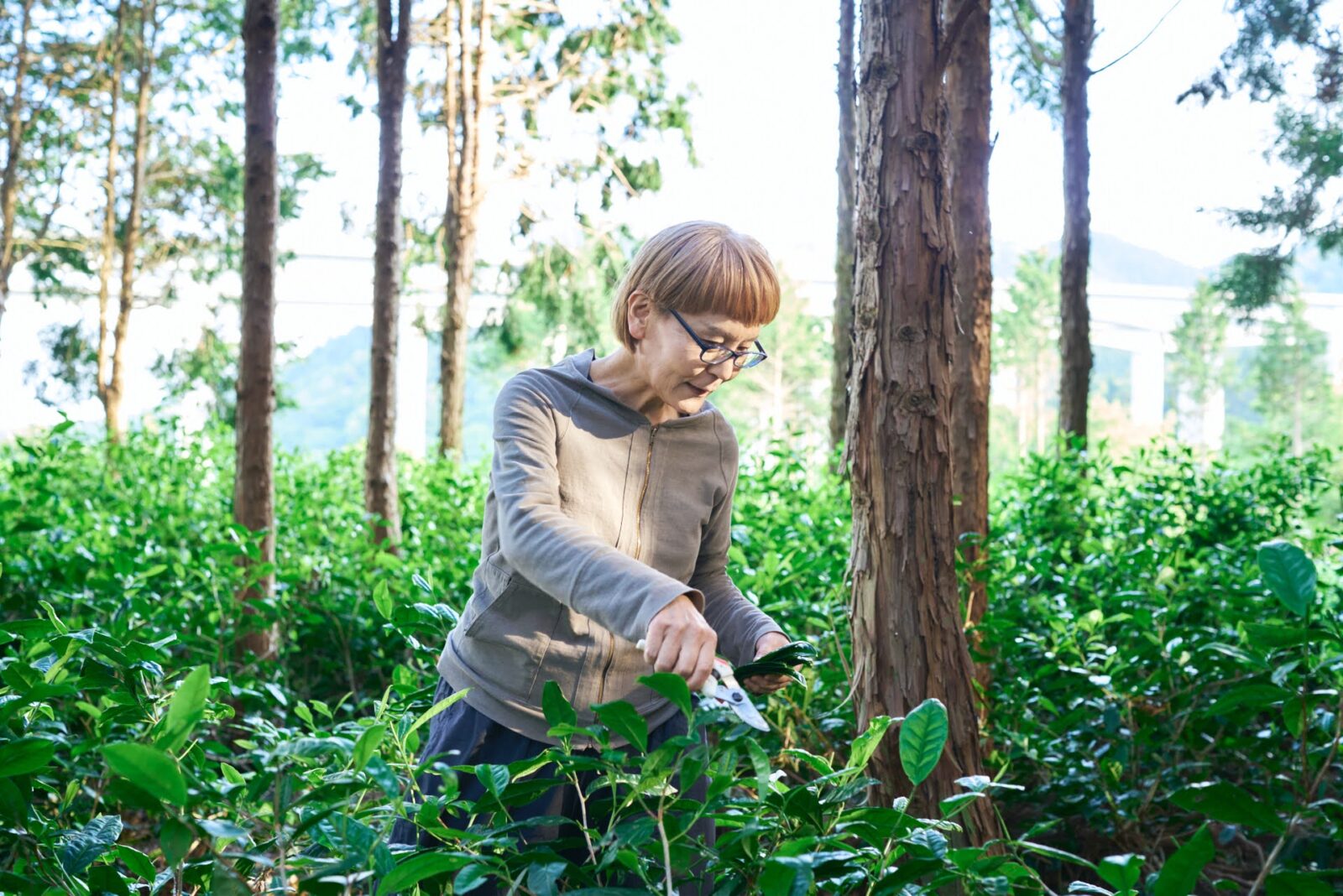
We were served some tea brewed from slightly fermented tea leaves. There was a striking fragrance and a deep flavor that amazed us to our core. The aroma, color and flavor changed with each additional brew and cup of tea.
The mystery surrounding this unique tea tree has its roots in the deep history between Japan and Taiwan.
We visited this tea tree plantation in Kameyama and enjoyed tea while we spoke to Yoneda about her future goals to develop the F4 tea into a new local brand with the help of the local youth.
Visiting the F4 tea tree plantation whose freely growing leaves shine brightly in the sun
Tea cultivation is common in Mie Prefecture and it boasts the third largest production volume in Japan, just after Shizuoka and Kagoshima Prefecture.
When you drive around this region you will find neatly trimmed and rounded rows of tea trees all around, however we found that the F4 tea tree plantation that Yoneda guided us to was completely different from other conventional farms.
In fact, we wonder if it even constitutes a tea plantation. Of course, it is carefully managed and tended to, but there is very little that shows any sign of human intervention.

The tea trees here grow freely, spreading their branches left and right, and their leaves are large and firm. Some of the trees have grown to be over 4 meters tall and have a large strong trunk.
This land used to be deserted farmland for decades. The F4 tea trees are grown naturally, without the use of pesticides or chemical fertilizer.
We went deeper into the forest to visit their other tea tree plantation in the woods.
In a dense cypress grove, which is shaded and only passes a little sunlight, we found tea trees growing with vigor. The leaves seem to shimmer and glow when the occasional ray of sun comes down between the trees.
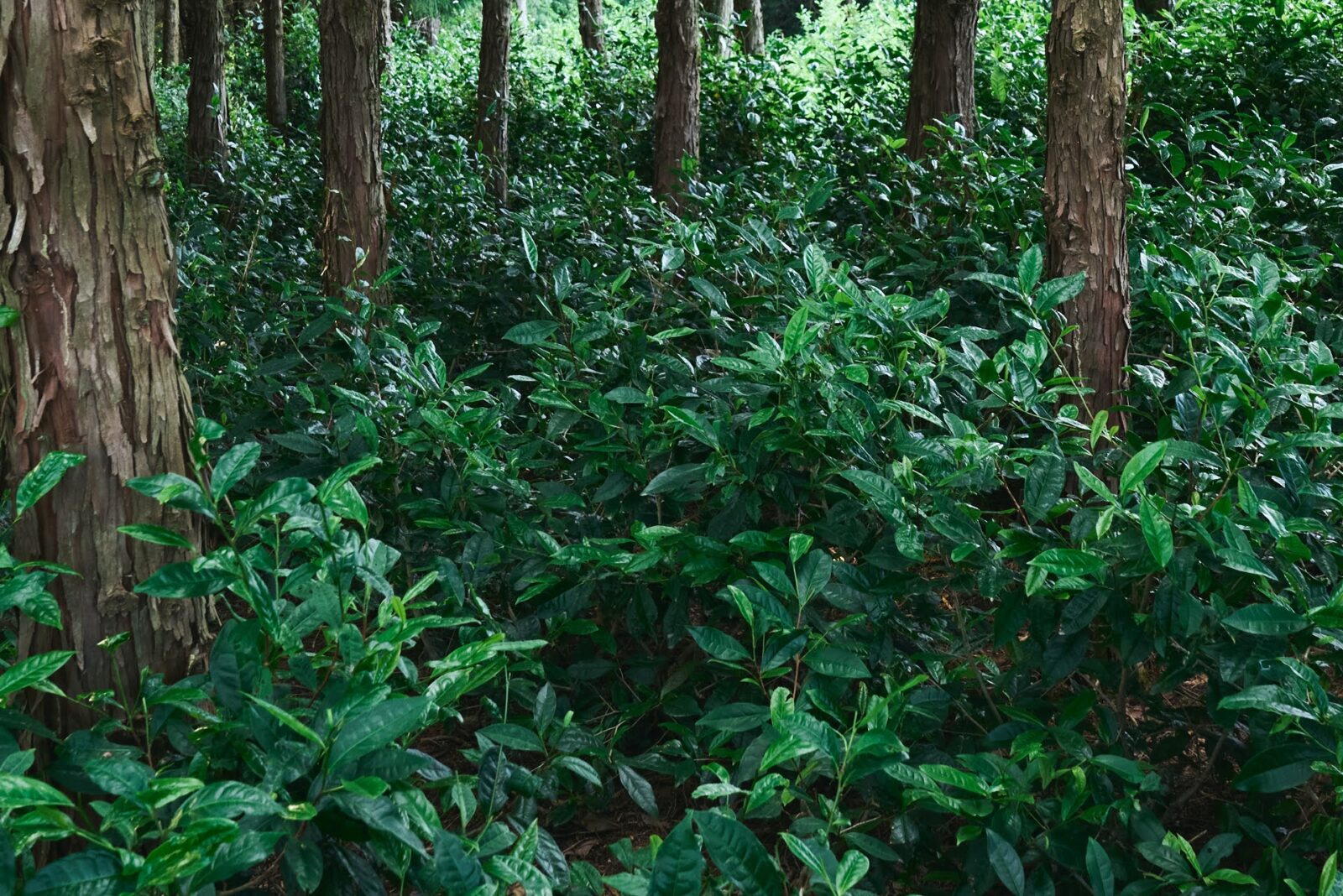
Yoneda tells us, “The F4 is a variety that can be grown in the jungle, so it can grow with or without sunlight. In this region there is serious damage from deer eating crops lately, but the deer are not interested in eating tea tree leaves.”
In tea cultivation, there is a method of covering tea trees with a cloth to block sunlight before harvest to bring out the flavor and sweetness of theanine for high-end teas such as gyokuro.
For the F4 tea trees in this forest, the surrounding forest trees seem to provide a natural cover.
Yoneda has been growing tea trees for 10 years. She says this year’s tea is coming out to be the best yet.
So how did the mysterious F4 tea tree, which cannot be found anywhere else in Japan, end up in Kameyama of Mie Prefecture?
What is the F4 variety exactly? We spoke to Yoneda to unravel the story behind the F4 tea tree.
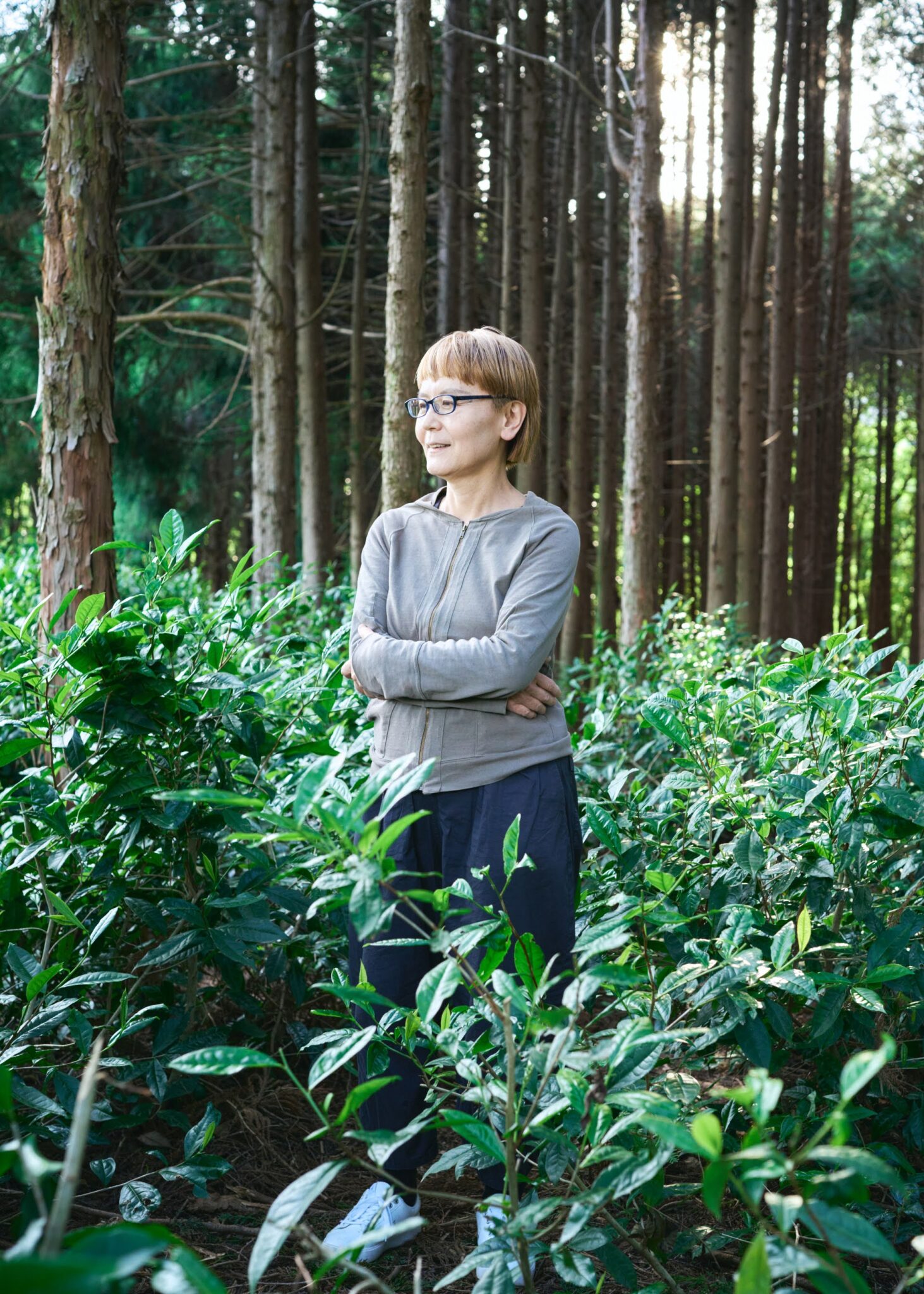
The fateful connection between Taiwan and Mie Prefecture, connected by tea
Yoneda and her husband Hironobu Ishikawa opened their gallery Jikonka in Sekicho of Kameyama City along the Tokaido Highway, 25 years ago.
Sekicho used to be called Sekijuku and once prospered as a central hub for travel between east and west Japan.
The old streets of this town still harbor many historical buildings and the Jikonka gallery is built inside a renovated traditional Japanese house from the Edo Period.

Yoneda says she was always interested in arts and crafts and tools for everyday life. She also enjoys making things herself. She studied ceramics at an art school and worked as a ceramic artist.
When they opened Jikonka in 1998, they featured pottery works and dyed clothes of artists connected to Yoneda. They also ran a cafe that featured handmade food and desserts made with locally sourced ingredients.
Their operation was unique at the time and Jikonka attracted a lot of attention as a new kind of shop that focuses on daily life and introduces new lifestyles. They published a book “おいしいをつくるもの 而今禾の道具たち” (Making delicous food with Jikonka tools) (published by Shufu-To-Seikatsusha) in 2004 which also garnered a lot of attention. The book was also sold in bookstores in Taiwan and this drew customers from both Japan, Taiwan and China to their gallery shop.
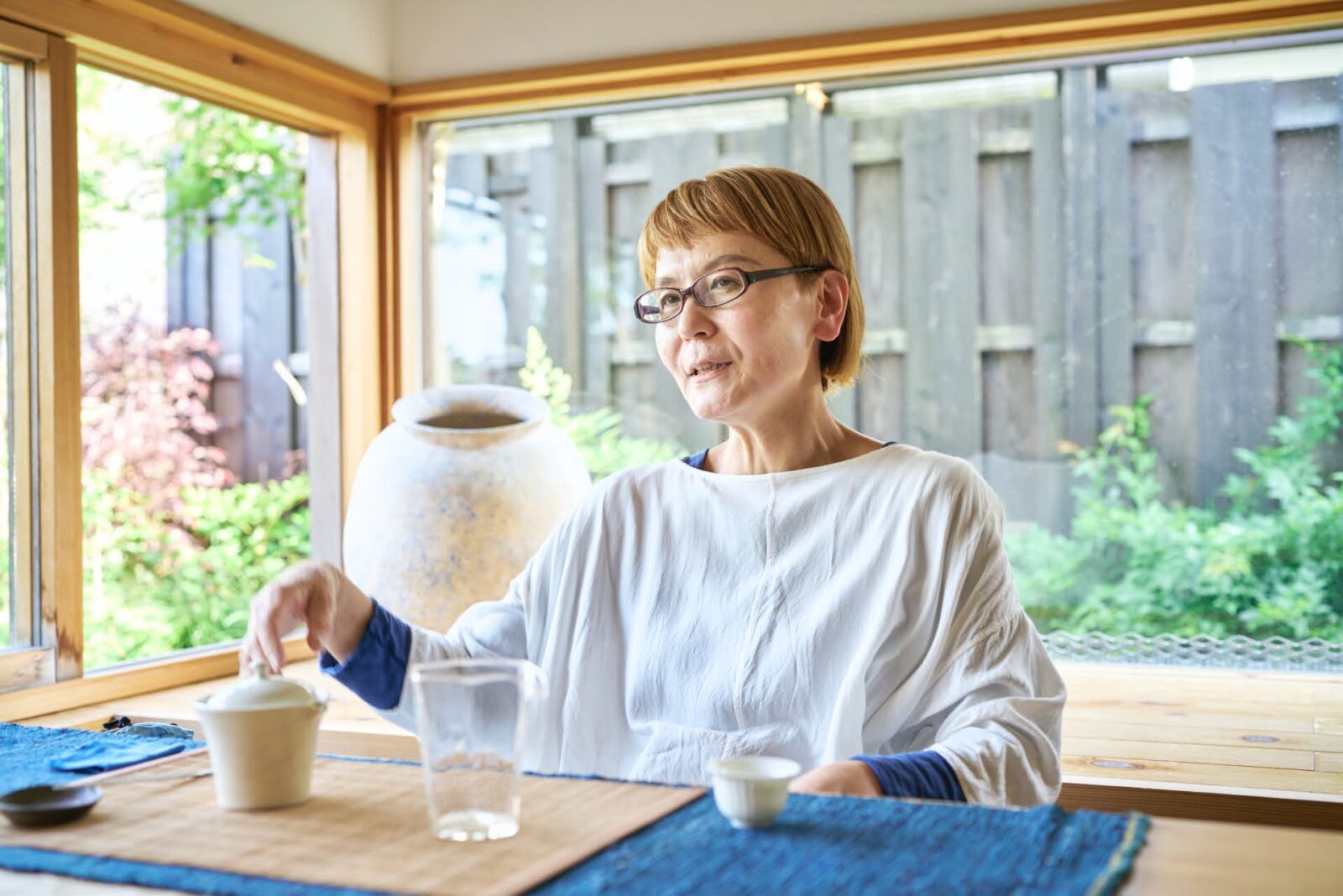
Yoneda became acquainted with Jamei Chen, a famous fashion designer from Taiwan, through this book which led her work to extend to Taiwan. From then, Yoneda started traveling to Taiwan often.
In Taiwan, Yoneda discovered the beauty of tea in everyday life. As she traveled there regularly, she became acquainted with Taiwanese tea masters, tea farmers and tea researchers and her interest in Taiwanese tea continued to grow.
“One significant person I met at that time was tea master Michiyo Sugiyama, who translated for me on my travels in Taiwan. She had been living in Taiwan for many years and had a deep understanding of the history between Taiwan and Japan. She explained the appeal of Taiwanese tea from a Japanese perspective.”
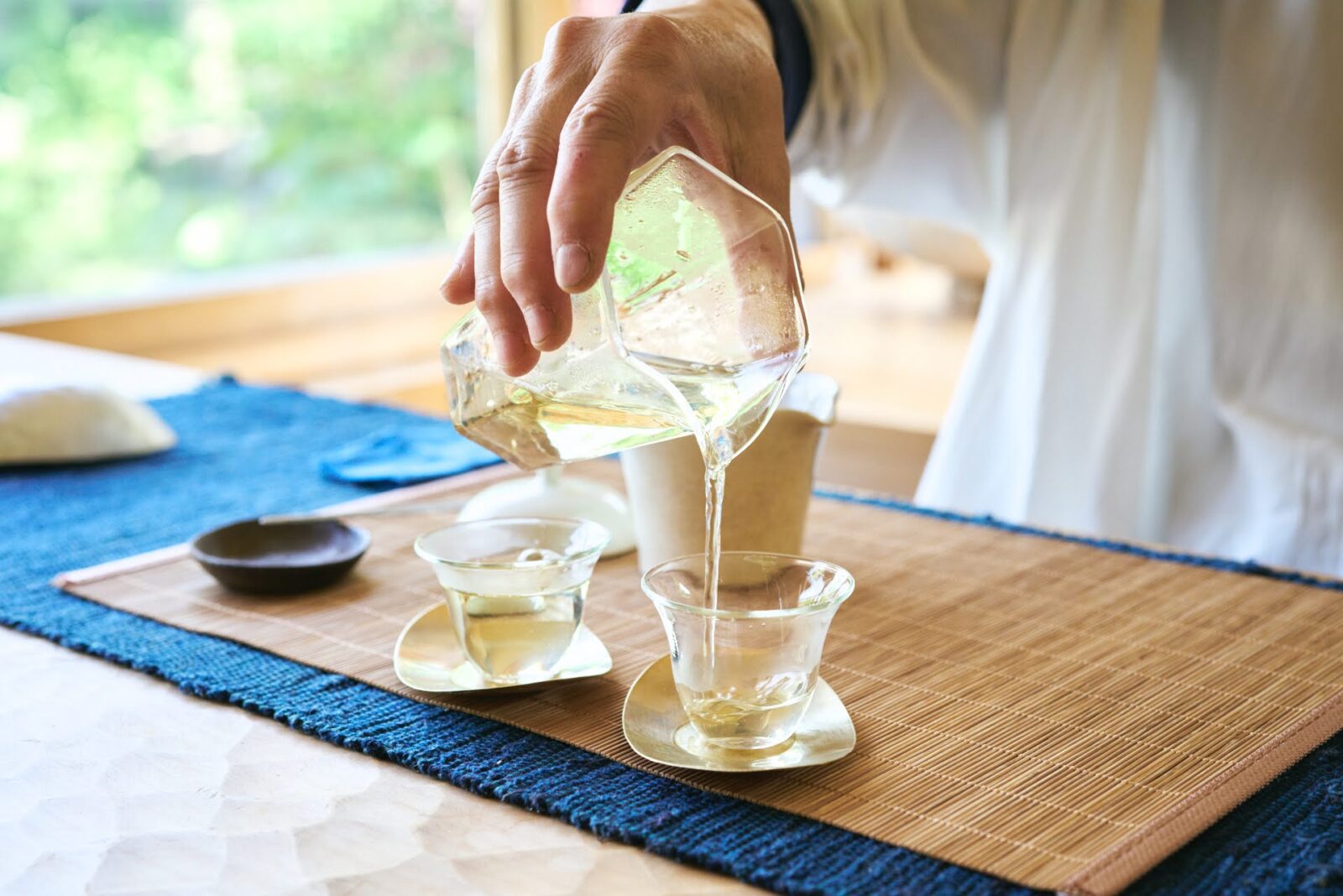
Yoneda’s interest in Taiwanese tea continued to grow as she learned more about Taiwanese culture. She also learned that there was a significant connection between Taiwan and Mie Prefecture through tea.
Bringing black tea from Taiwan for production in Mie Prefecture
It seems fateful that Yoneda discovered the tea trees in the abandoned farmland and forest around this time.
As she began studying the history surrounding the tea trees that had been abandoned for decades, the name of Tsutomu Kawato, a man who was a native of Nodo Village (present-day Kameyama City) came to light. He contributed largely to the development of the black tea industry in Japan.
Back when Taiwan was under Japanese rule, Japanese companies such as Mitsui Gomei Kaisha (present-day Nittoh Tea) and Morinaga Seika (present-day Morinaga Tea) established tea farms and factories in Taiwan to produce and export black tea.
Back then, black tea was an important commodity that could be exchanged for foreign currency.

Even after the war and the Japanese occupation ended, some Japanese people continued to produce tea in Taiwan.
Kawato was one of such people. He was in charge of running seven factories in Taiwan and became an important figure there.
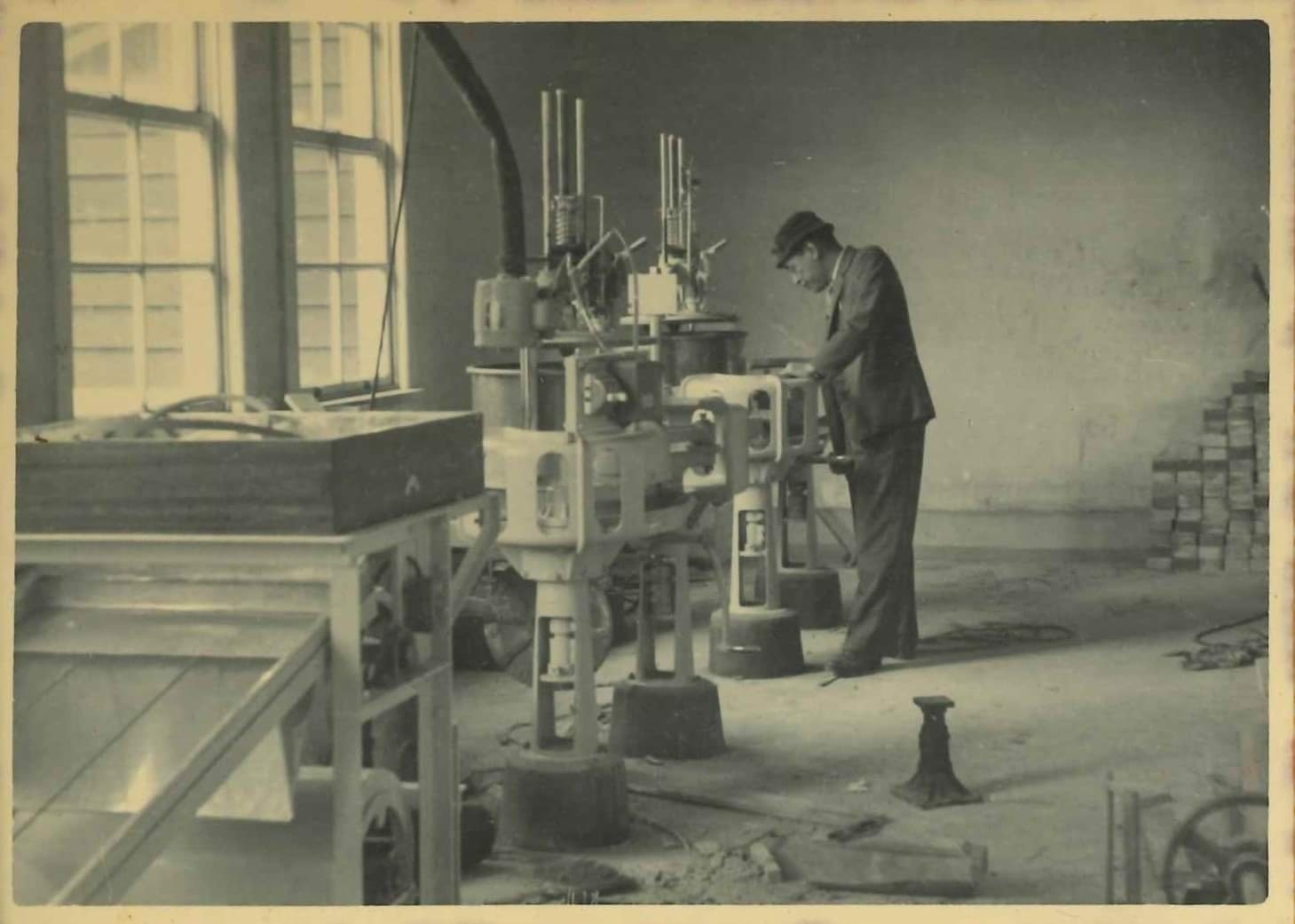
When Kawato returned to Japan, he began to embark on a full scale black tea production project. He selected a variety of black teas that would produce delicious tea in Japan, which has a cooler climate than Taiwan. He grew seedlings from cuttings propagation and handed them out to farmers for free.
Thanks to his efforts, Mie Prefecture became a major producer of black tea, winning the top prizes in tea competitions in Japan for ten consecutive years and earning high praise overseas as well.
However, liberalization of tea imports were implemented in 1970, bringing in waves of inexpensive black tea from overseas. Mie’s black tea industry suffered and was eventually forgotten.
The F4 variety tea tree that Yoneda discovered by chance in the abandoned farmland was an experimental variety that Kawato was growing to make tea for exporting.
Varieties such as the F4 tea tree, which has roots in Taiwan, are for black tea and other fermented teas. After conducting a DNA analysis of the F4 tea tree, they found that 50% of its genes are from native Taiwanese mountain tea trees.
As Yoneda started growing tea, she imagined the trials and tribulations of Kawato’s life and visited Taiwan to follow his footsteps.
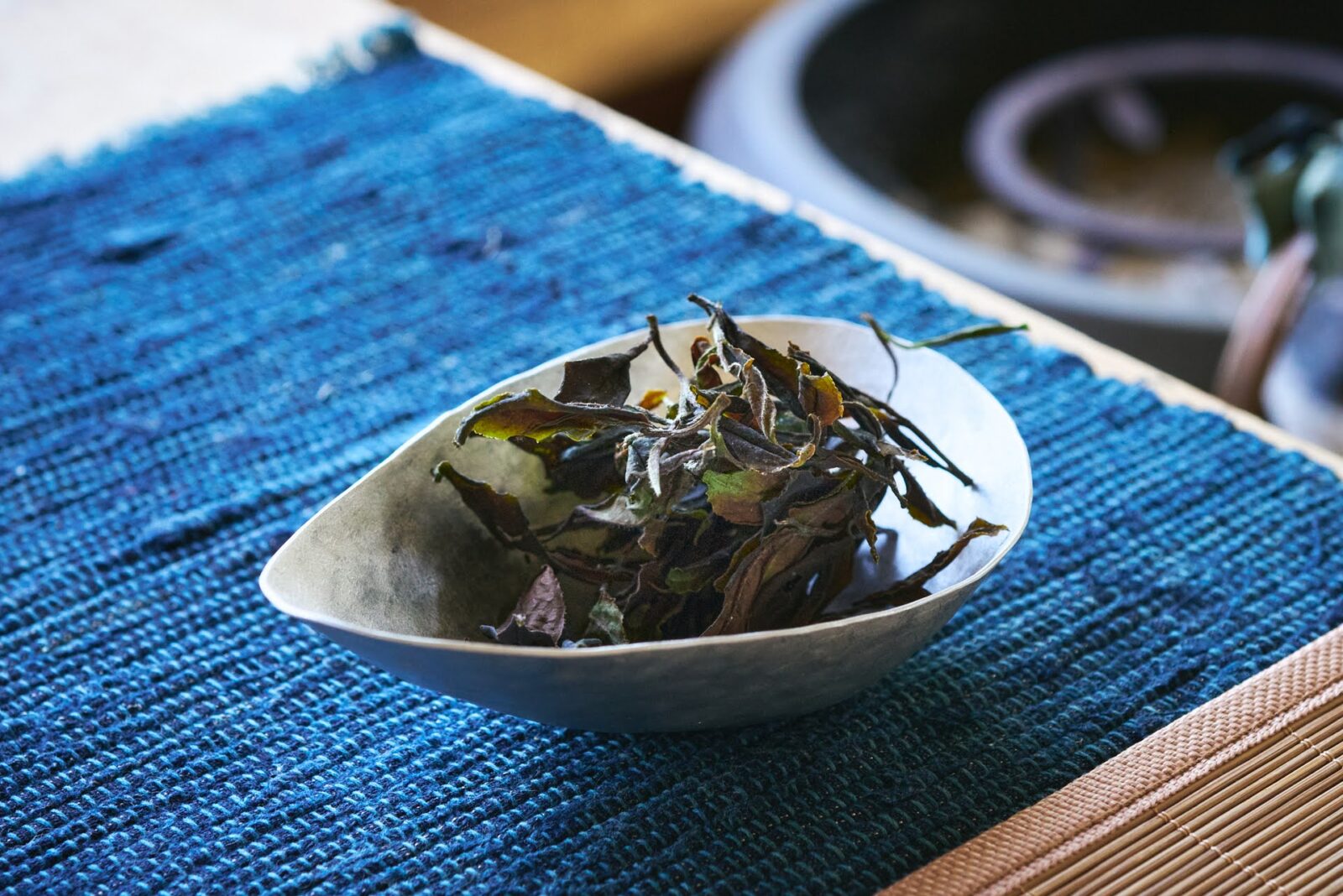
Passing on Mie Prefecture’s tea history and the F4 variety to future generations
The F of F4 comes from the Portuguese word Formosa, which means “beautiful island”. It is said that this name comes from the Europeans’ admiration of Taiwan’s beauty back in the Age of Exploration. Taiwanese tea was exported as Formosa Tea to Europe and its high quality was world renowned. Japanese professionals such as Kawato were involved in the production of such black teas.

In hopes of continuing Kawato’s legacy, Yoneda began a project to bring back the forgotten F4 variety and develop it into Kameyama’s first original brand of tea. In order to reach this goal, she launched a crowdfunding campaign (now closed) to collect funds and encourage people to become owners of F4 tea trees.
While gathering supporters, Yoneda is producing opportunities to realize various ideas surrounding tea, such as tea production, forest maintenance and creating spaces to experience art and tea.
She is exploring possibilities in utilizing abandoned farmland, implementing sustainable farming models, product design and brand development, etc. that can coexist with the natural resources of the region. She hopes her projects will give hope to younger generations and provide hints on how to move forward in the future.
“The more I got involved in tea production, the more I felt the weight of Kawato’s unfulfilled efforts and dreams. I began to realize how important it is to share the history of tea in Japan to as many people as possible.”
“There is a valuable treasure here that does not exist elsewhere. It is our job to recognize its value and make the most of it.”
An open-air tea ceremony in the mountains
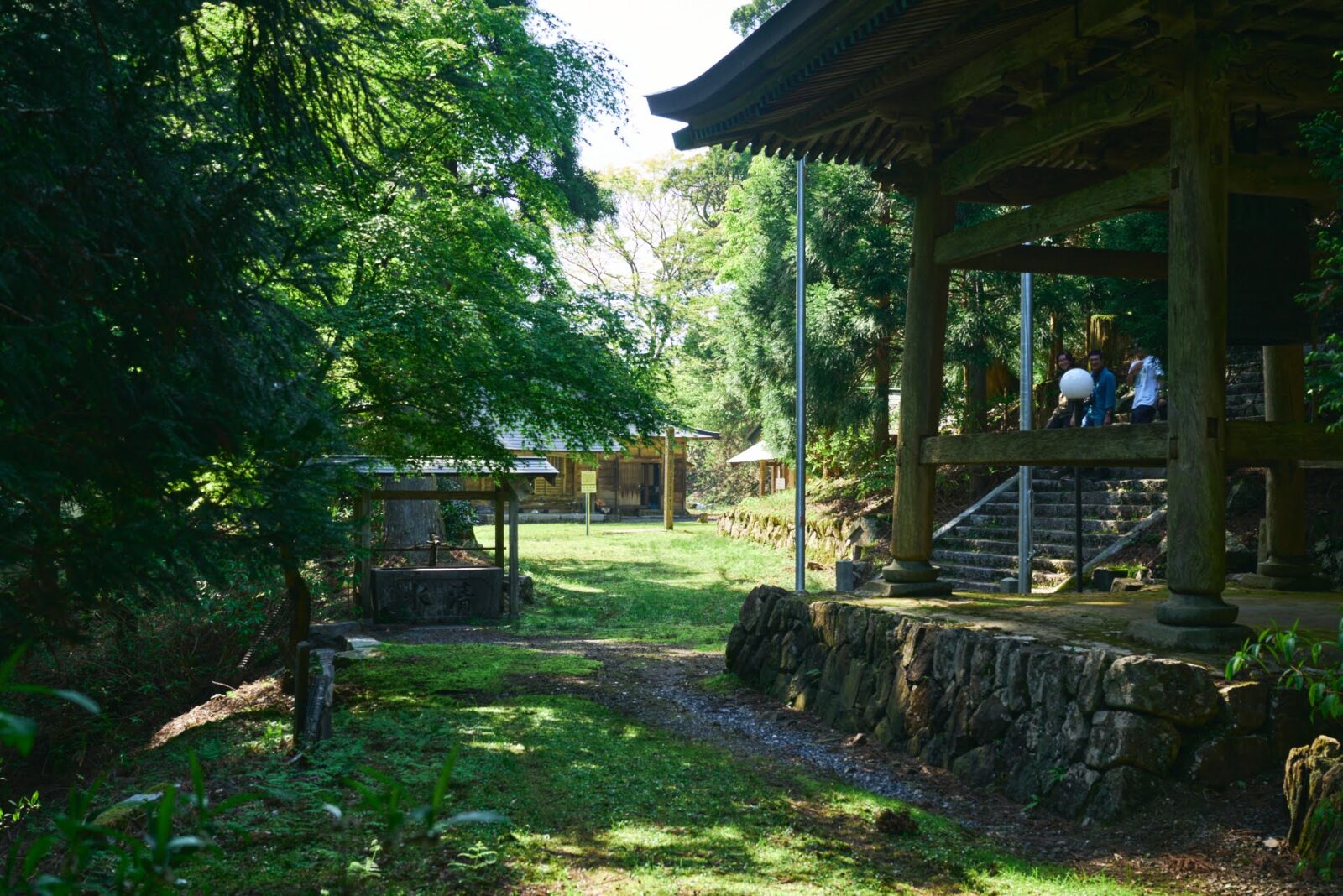
On a morning of a sunny weekend in May, there was a large gathering of people near the summit of Mt. Nonobori. There is a temple here called Yatouji which is said to have been built in the Heian Period (794-1185) and the people were gathered here for a tea ceremony.
Mt. Nonobori is a part of the Suzuka mountain range and has a height of 851.4 meters. Yatouji temple has long been worshiped as a temple for rain because it has a natural spring at its summit.
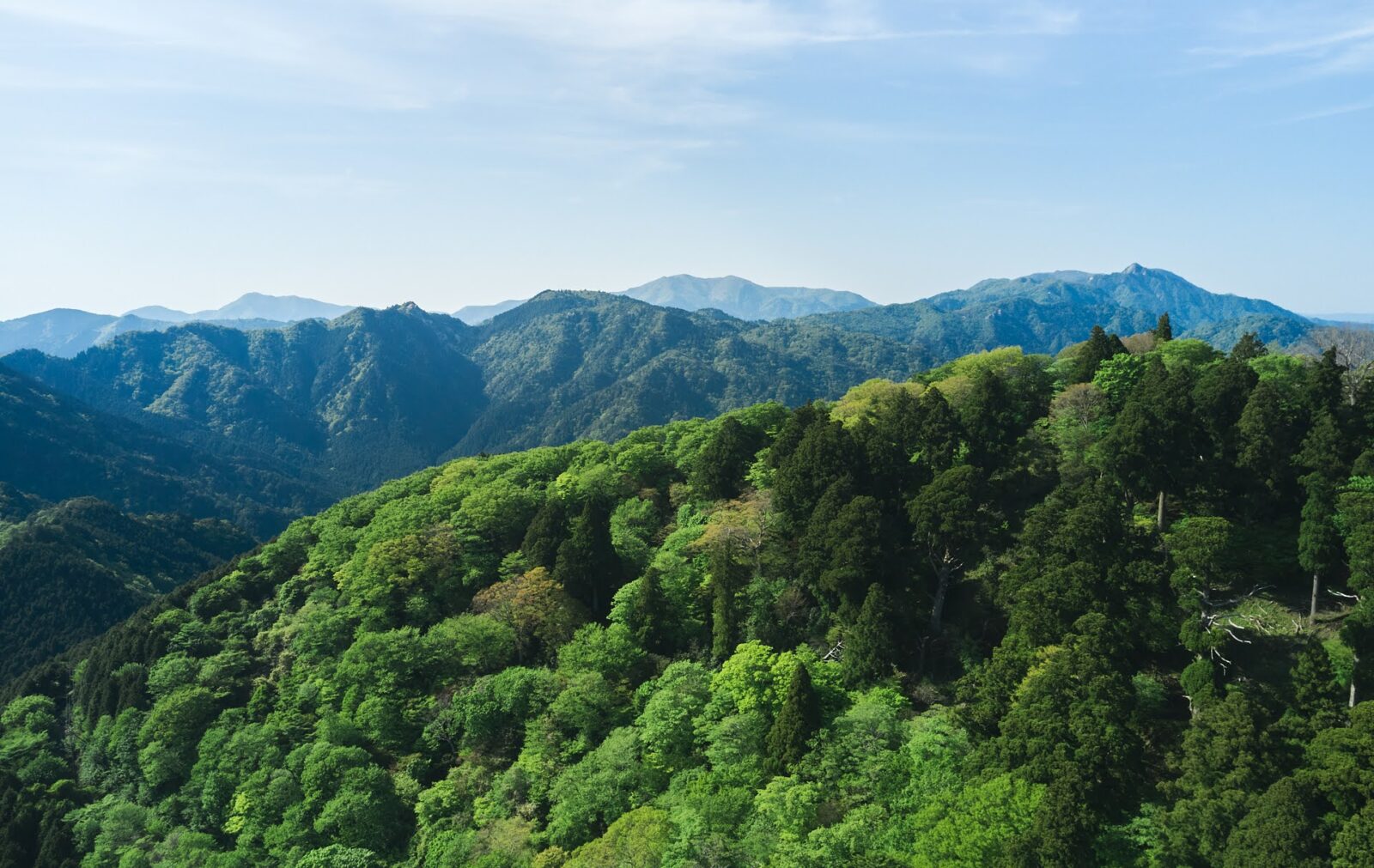
The tea ceremony was held on a beautifully sunny day. We walked up the bumpy slope in the shade of the trees and there was a gentle stream of clear water flowing out of a natural spring which provided a moment of refreshing coolness.
A fire was lit in the open space in front of the temple and water was boiled in a large old iron kettle that is said to be from the Edo Period (1603-1868). The tea to be served was the F4 tea, using the mountain springwater nearby.

Looking around, we noticed that we were surrounded by spectacularly large cedar trees, some over 40 meters tall. They say that it is rare to have such large natural cedar trees on the summit of a mountain.
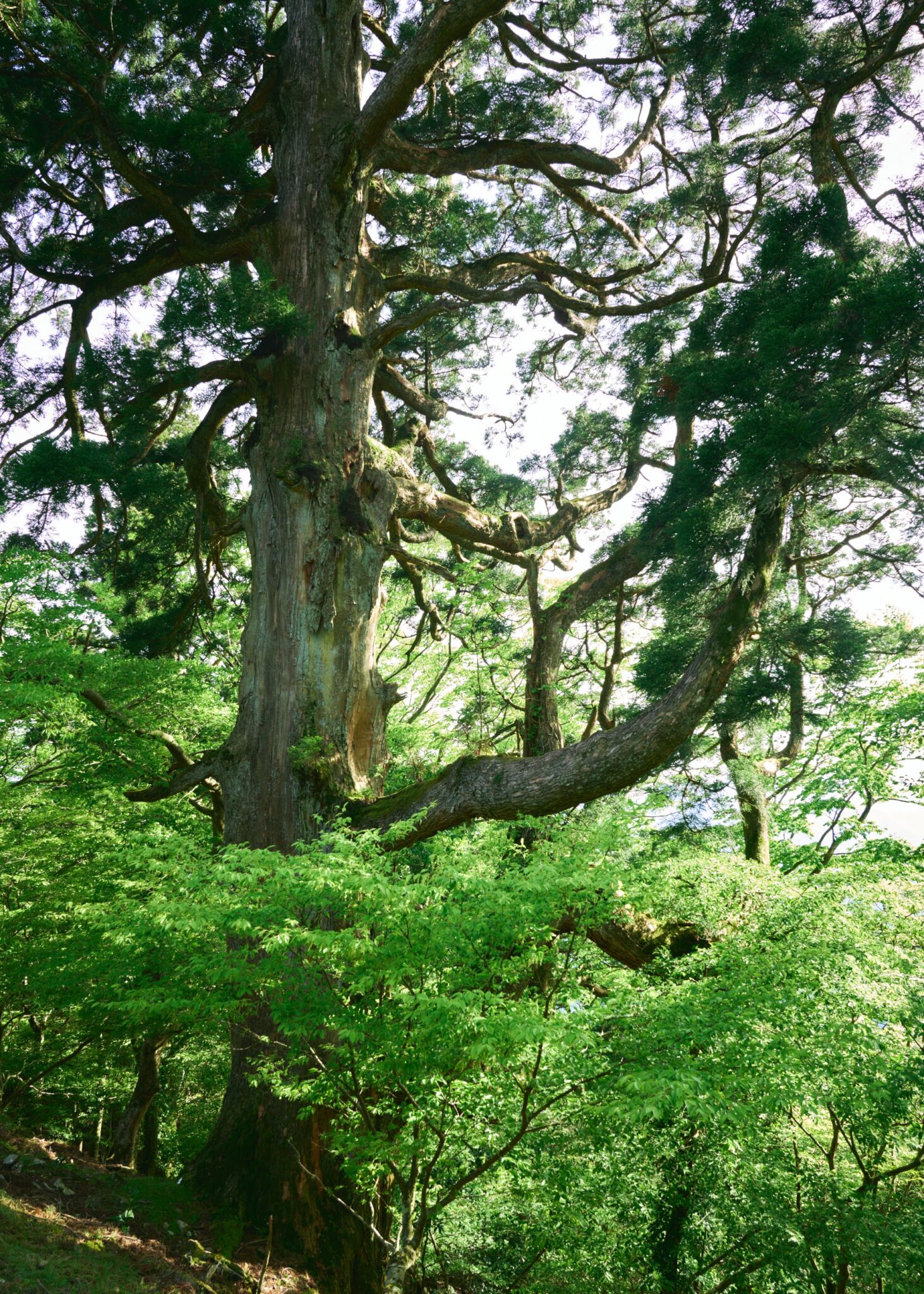
Tadashi Yasuda, chairman of the Kamemorikyo (Suzuka River Forest Council), said,
“Cedars require a lot of water to grow, and this area happens to have an abundance of spring water due to its topography. The mountain water flows downward to the valley to the Sakamoto rice paddies, which was selected as one of the 100 most beautiful terraced rice paddies in Japan. Finally, the water flows into the Anraku river. lt is a natural water source that has been treasured by the locals for a long time.”
The Kamemorikyo (Suzuka River Forest Council) is an organization that is active in a wide range of activities to protect the local natural environment, including forests and water sources of Kameyama City.
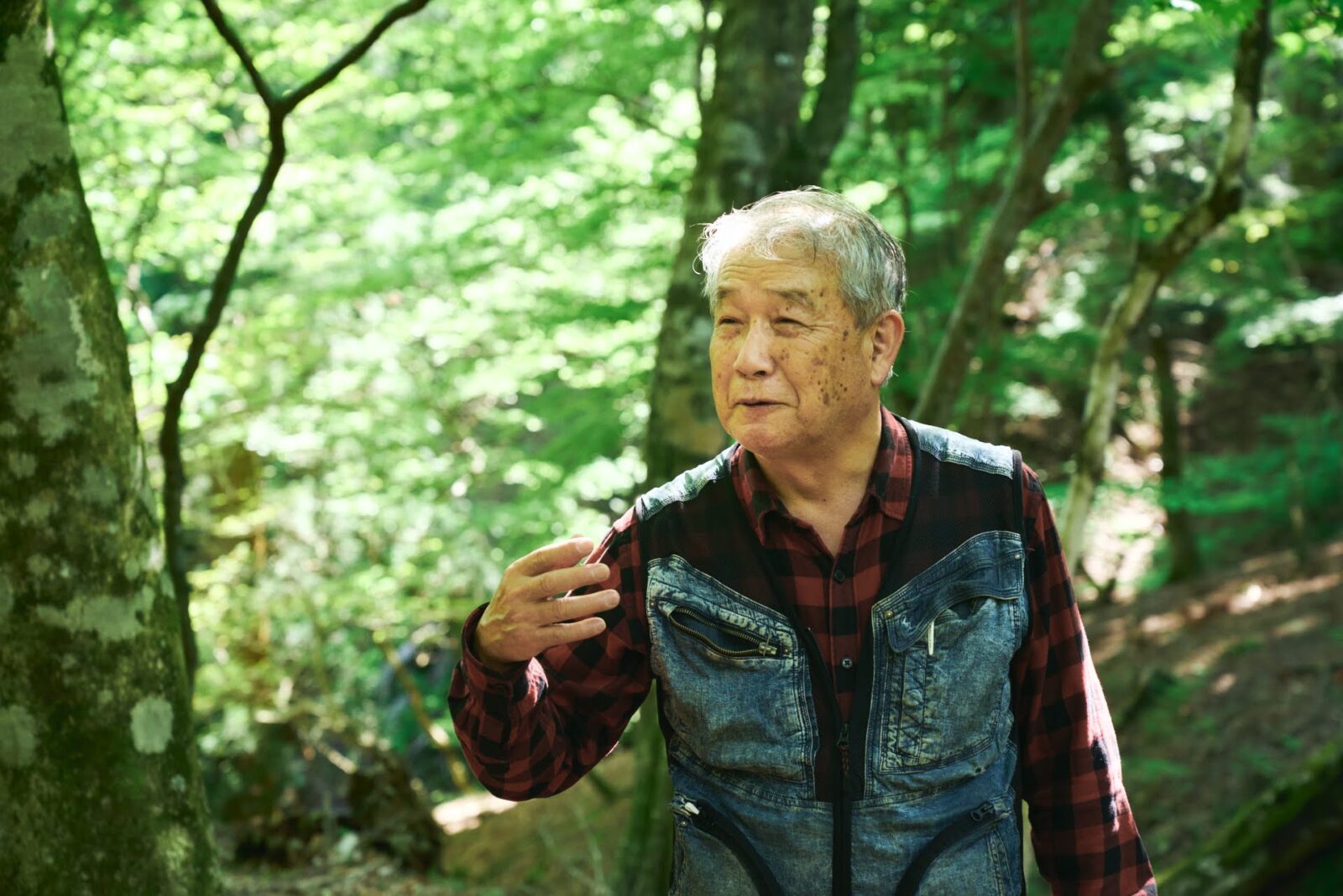
All over Japan forests have suffered in recent years as climate change has decimated large areas of once abundant old beech forests. Wild deer are becoming a bigger problem as they eat away suzutake, a once abundant species of bamboo grass that is a good companion plant to beech trees that is now mostly gone.
This tea ceremony, named “Mizu no Yukue” (Where the water flows), was held to bring people together to connect and exchange ideas on how to protect the local natural environment, which past generations have protected for over a thousand years. The tea served at this ceremony was the F4 tea grown in Kameyama.

Yoneda was the organizer of this tea ceremony event.
“It was a lot of work to put it together, but after seeing all the participants from the local area enjoying it, I am glad I did it. The local people really helped me organize it and it made me realize the strength in this community.”
Kameyama City mayor, Yoshiyuki Sakurai, attended the tea ceremony as well as other government representatives such as those from the Forestry Agency and other special guests.
Mayor Sakurai commented, “Being able to attend a tea ceremony in the forest was a very special experience. I hope this event will help bring new life to the tea culture of this region.”
The tea was brewed and served to guests by a group of six young local members called “Tea MEN’24”.
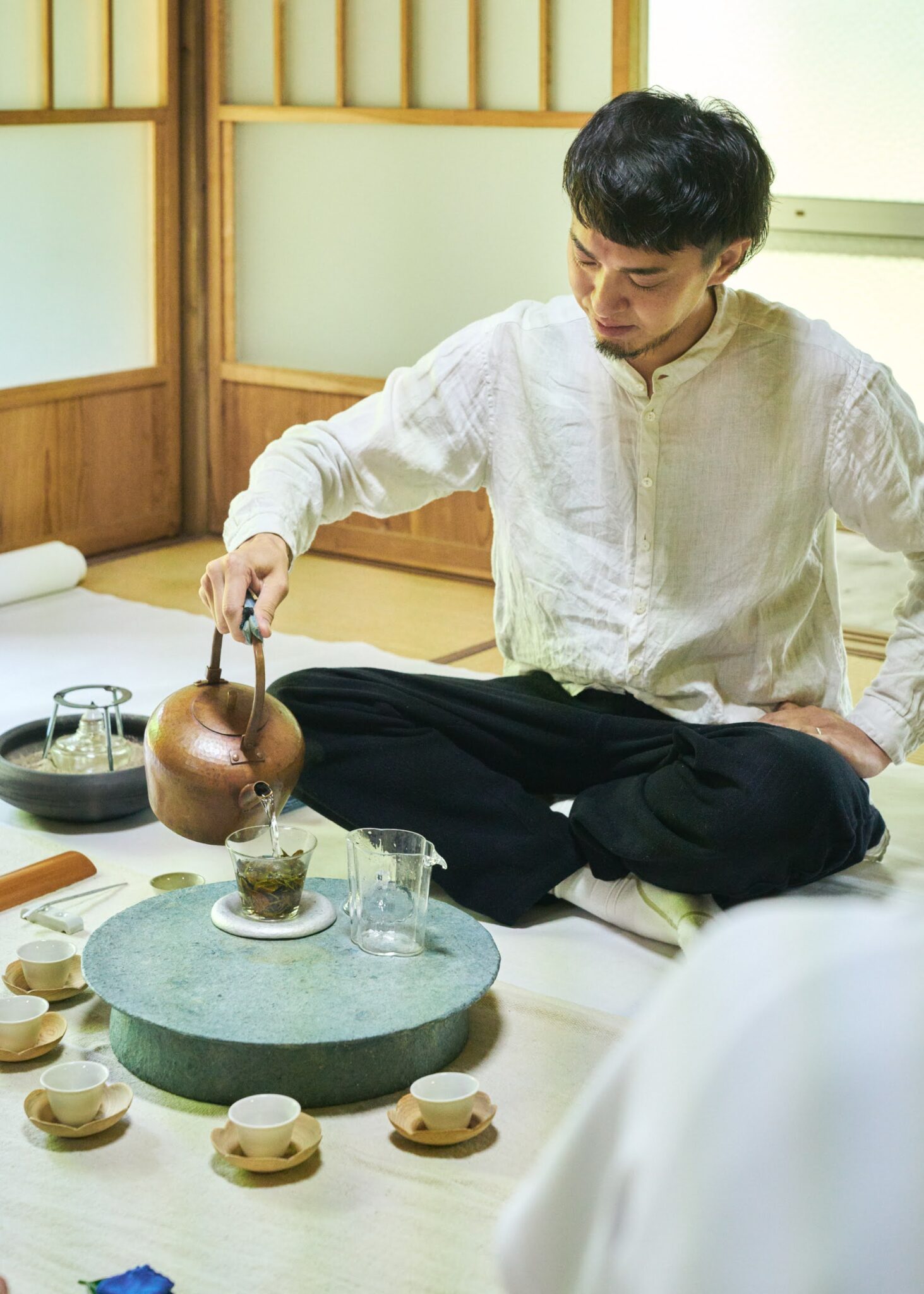
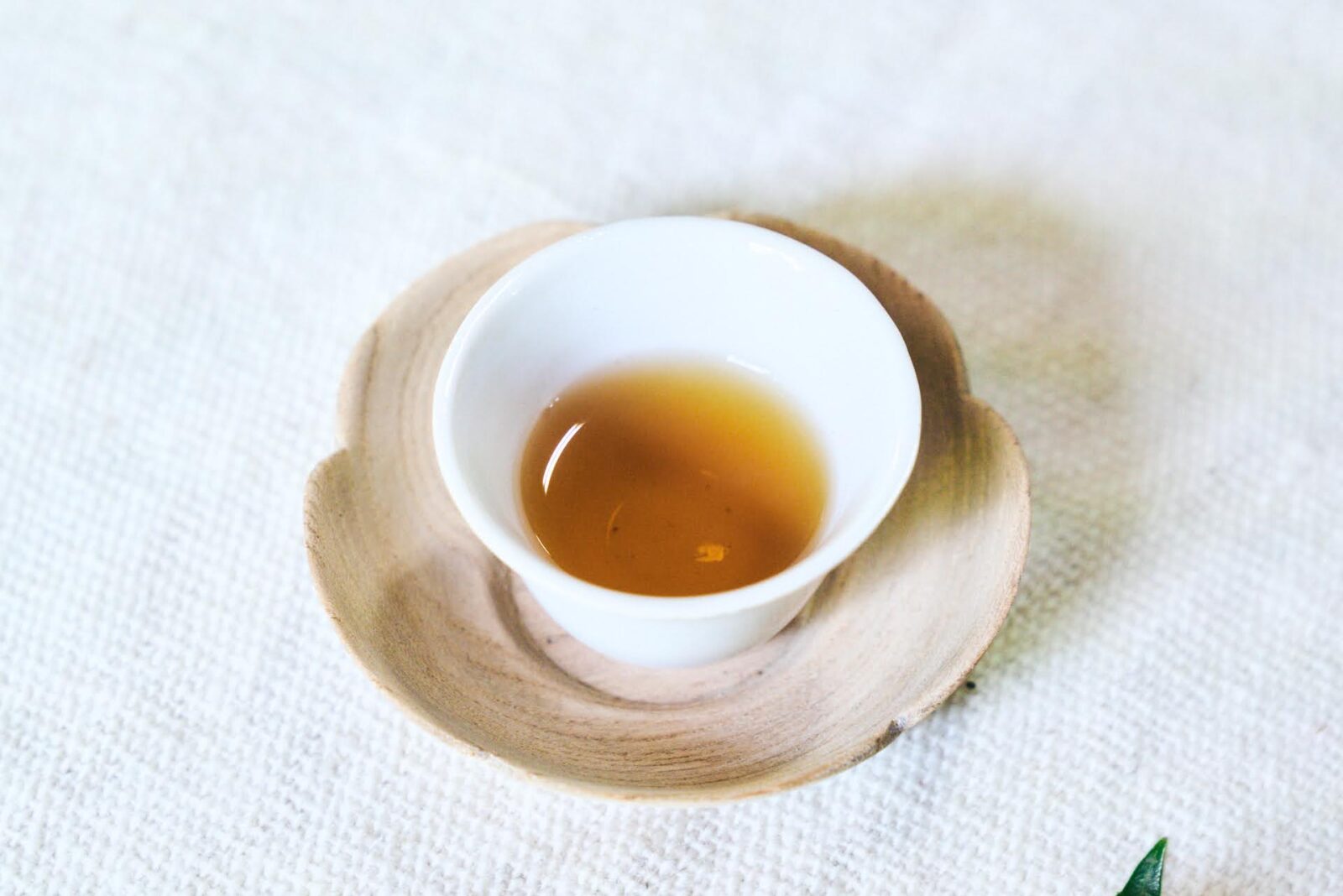
These young members are made up of people of different occupations, from doctors, architects and cooks. They are members who have recognized the importance of preserving the history and natural environment of this region. They have also become captivated by the connections that tea time creates. To prepare for this event, they have diligently practiced the art of tea and aspire to be tea masters.
Some of them have traveled to Taiwan to study the essence of tea. The tea they brewed was delicate and beautifully done. It was a special experience to enjoy a cup of tea while listening to these youth talk about their love for their homeland.
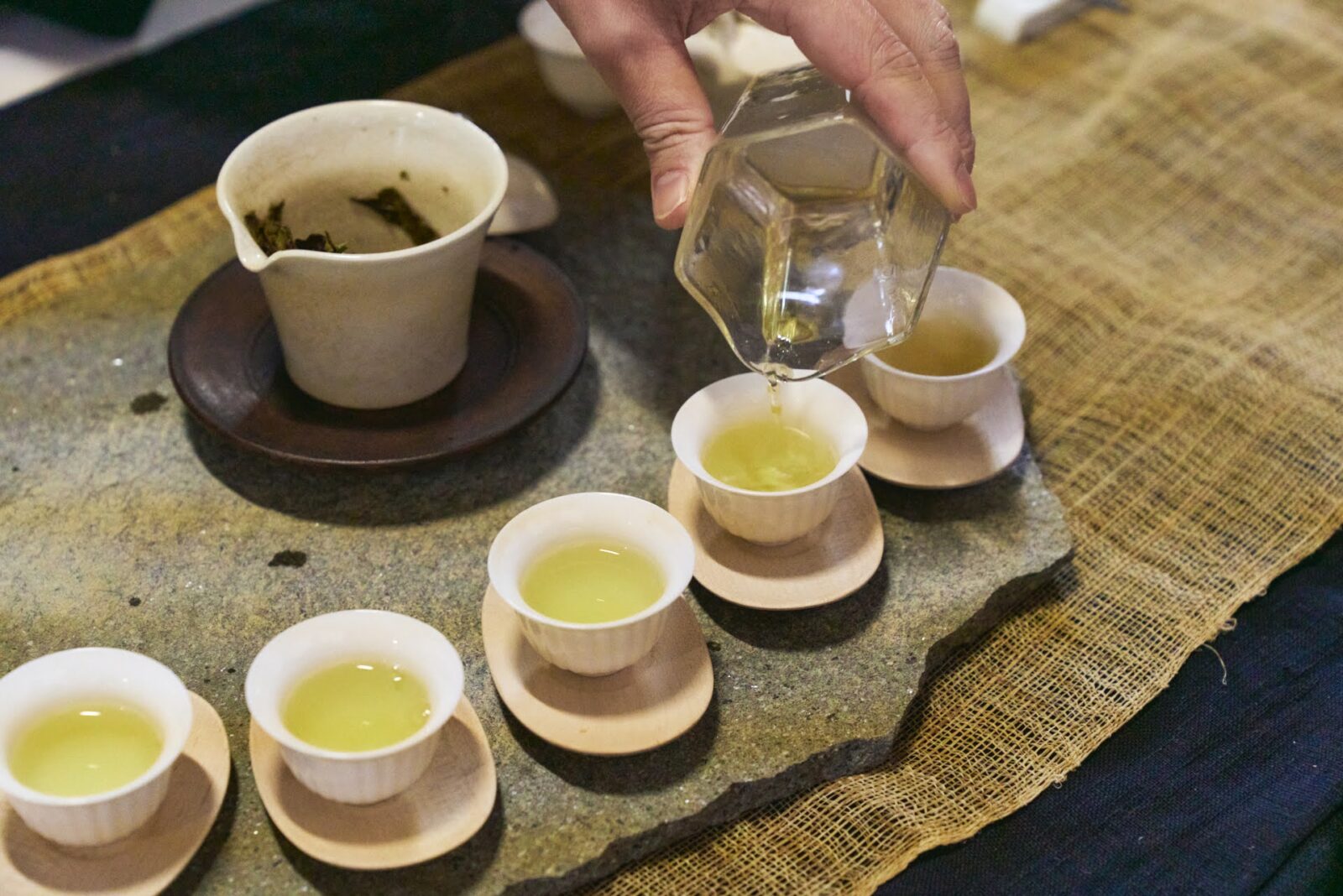
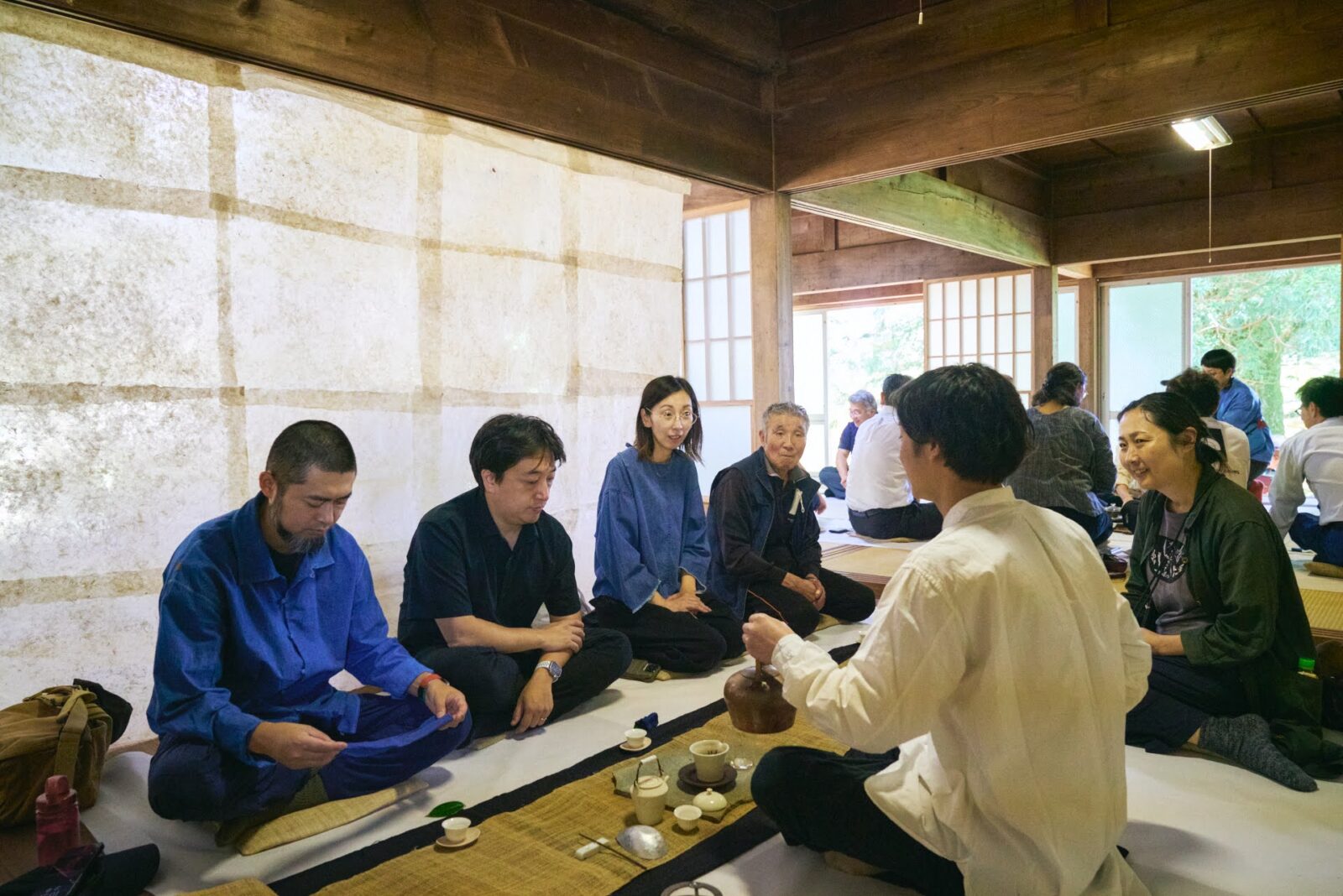
The endless possibilities made possible through tea
Jikonka is now making fermented white tea and black tea using the F4 tea leaves. All of the leaves are handpicked and the tea is processed by hand.
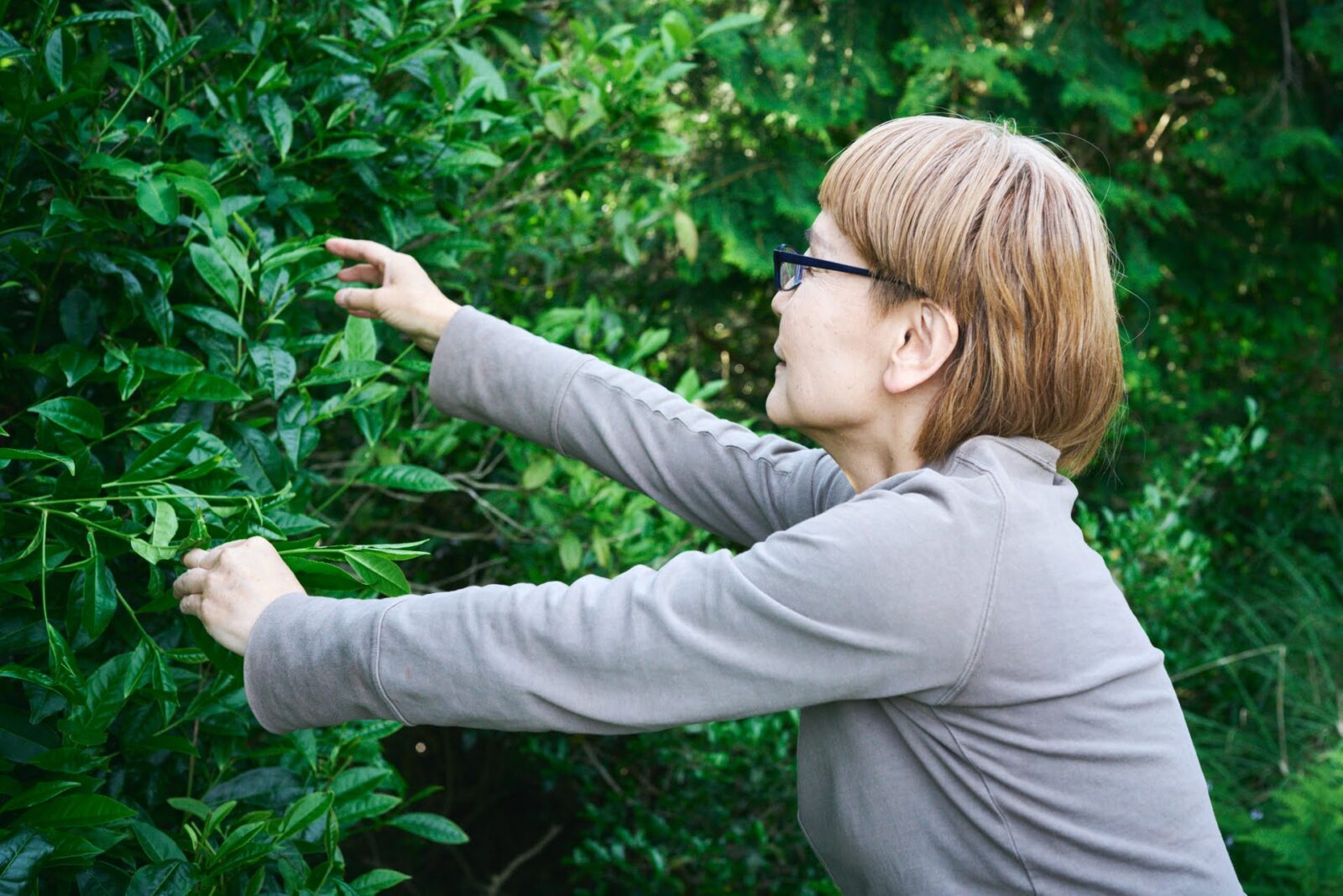
The F4 white tea that was brewed for us had a subtle change in flavor and fragrance with each successive brew, making the drinking experience that much more intriguing. Each sip left a lingering flavor that made you stop and enjoy the moment, and it did not release any astringency no matter how many times it was brewed. The tea had a deep and silent power to it.
Yoneda shared her various and exciting ideas that came up one after another as we leisurely shared tea in the soothing atmosphere.
Her ideas include making a handmade teahouse in the F4 tea plantation in the forest to invite people for tea ceremonies.
She wants to harvest and process tea with people who support her vision.
Yoneda also makes indigo dyes and she wants to open a guest house where people can experience indigo dying first hand.
She wants to gather young architects to renovate the streets of Sekijuku.
She also wants to make sparkling tea with F4 tea and commercialize the product.
“I am still exploring ways to express and communicate my ideas, but I hope that more young people will also recognize the cultural treasures in front of them and take action like the Tea MEN members did for this event.”

Yoneda repeatedly states, “Tea is really a wonderful thing.”
“It connects people, happiness, history, culture, nature and everything around us. No matter the time or situation, tea makes everything better.”
Yoneda’s goals reflect Kawato’s vision and passion for tea cultivation. Her passion and enthusiasm is also inspiring to those around her.
“I am getting older so I think about what I can accomplish within the next five years and try my best to realize it in a way that will be satisfactory for me.”
Yoneda’s desire is to bring out the true essence and charm of this region, with the one and only F4 tea at its’ center.
There is a lot of talk about regional development and SDGs in recent years that says we should “think globally and act locally.” Yoneda’s projects at Jikonka and her story of the F4 tea tree plantation shows that if you dig deep into local treasures you will find global potential.
Yoneda works to design a future for the F4 tea tree that is a treasure lying dormant in the region today. This tea experience became an important reminder that the circular economy is founded on the passion and efforts of local leaders.
Translation: Sophia Swanson
Advisor to corporations, and local governments on promoting local tourism. Published work includes, “Aomori & Hakodate Travel Book” (Daimond), “San’in Travel: Craft and Food Tour” (Mynavi), “A Drunkard’s Travel Guide: Sake, Snacks, and Tableware Tour” (Mynavi). Her life work is to explore towns in her travels, drink at different shops and visit the workshops of different crafts. Interests include tea, the Jomon period, architecture, and fermented foods.
Editor. Born and raised in Kagoshima, the birthplace of Japanese tea. Worked for Impress, Inc. and Huffington Post Japan and has been involved in the launch and management of media after becoming independent. Does editing, writing, and content planning/production.
